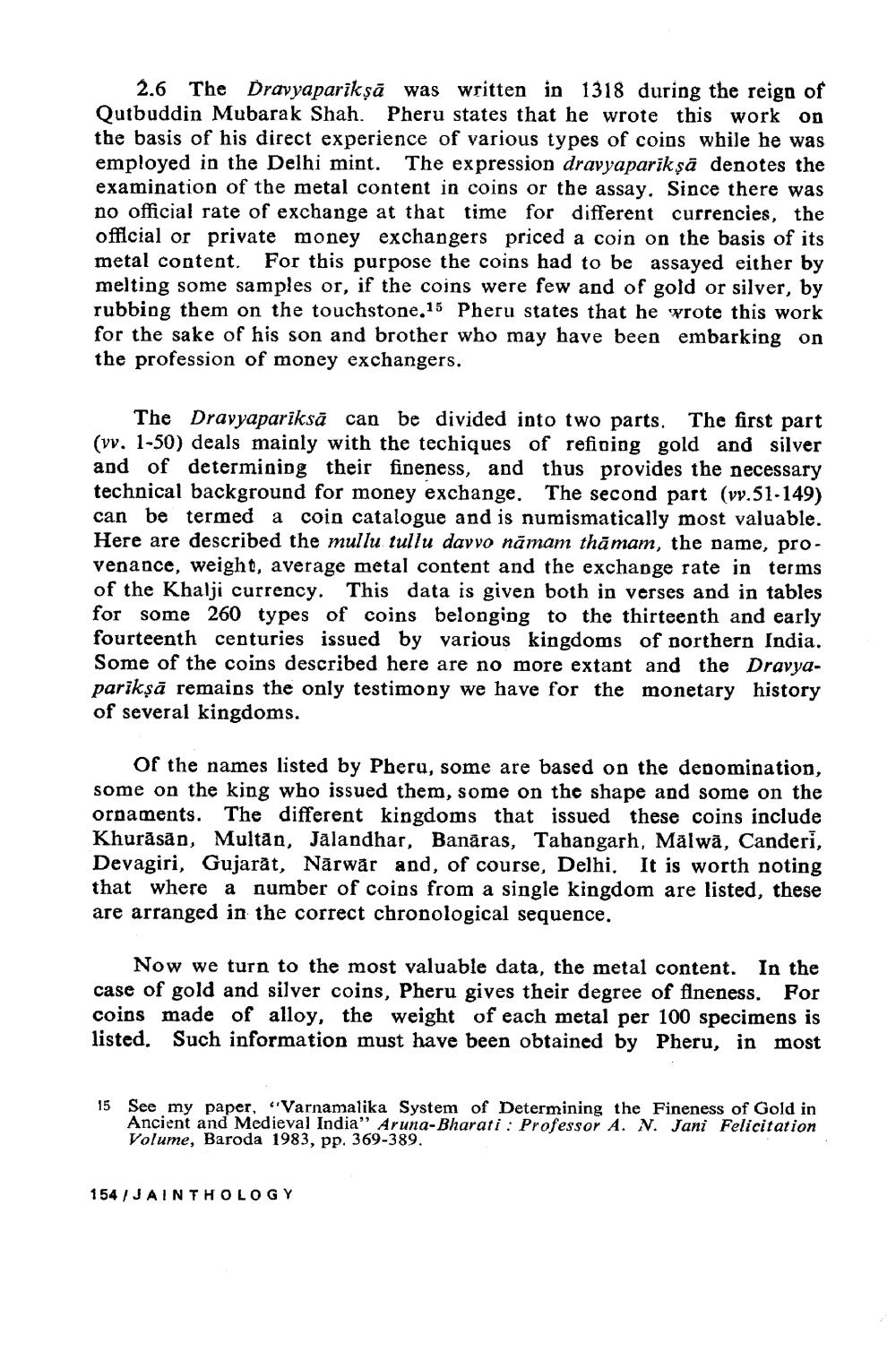________________
2.6 The Dravyaparik şā was written in 1318 during the reign of Qutbuddin Mubarak Shah. Pheru states that he wrote this work on the basis of his direct experience of various types of coins while he was employed in the Delhi mint. The expression dravyapariksa denotes the examination of the metal content in coins or the assay. Since there was no official rate of exchange at that time for different currencies, the official or private money exchangers priced a coin on the basis of its metal content. For this purpose the coins had to be assayed either by melting some samples or, if the coins were few and of gold or silver, by rubbing them on the touchstone.15 Pheru states that he wrote this work for the sake of his son and brother who may have been embarking on the profession of money exchangers.
The Dravyapariksā can be divided into two parts. The first part (vv. 1-50) deals mainly with the techiques of refining gold and silver and of determining their fineness, and thus provides the necessary technical background for money exchange. The second part (vv.51.149) can be termed a coin catalogue and is numismatically most valuable. Here are described the mullu tullu davvo nămam thāmam, the name, provenance, weight, average metal content and the exchange rate in terms of the Khalji currency. This data is given both in verses and in tables for some 260 types of coins belonging to the thirteenth and early fourteenth centuries issued by various kingdoms of northern India. Some of the coins described here are no more extant and the Dravyapariksā remains the only testimony we have for the monetary history of several kingdoms.
of the names listed by Pheru, some are based on the denomination, some on the king who issued them, some on the shape and some on the ornaments. The different kingdoms that issued these coins include Khurāsān, Multan, Jalandhar, Banaras, Tahangarh, Malwā, Canderi, Devagiri, Gujarat, Nārwär and, of course, Delhi, It is worth noting that where a number of coins from a single kingdom are listed, these are arranged in the correct chronological sequence.
Now we turn to the most valuable data, the metal content. In the case of gold and silver coins, Pheru gives their degree of fineness. For coins made of alloy, the weight of each metal per 100 specimens is listed. Such information must have been obtained by Pheru, in most
15 See my paper, “Varnamalika System of Determining the Fineness of Gold in
Ancient and Medieval India" Aruna-Bharati : Professor A. N. Jani Felicitation Volume, Baroda 1983, pp. 369-389.
154 / JAINTHOLOGY




